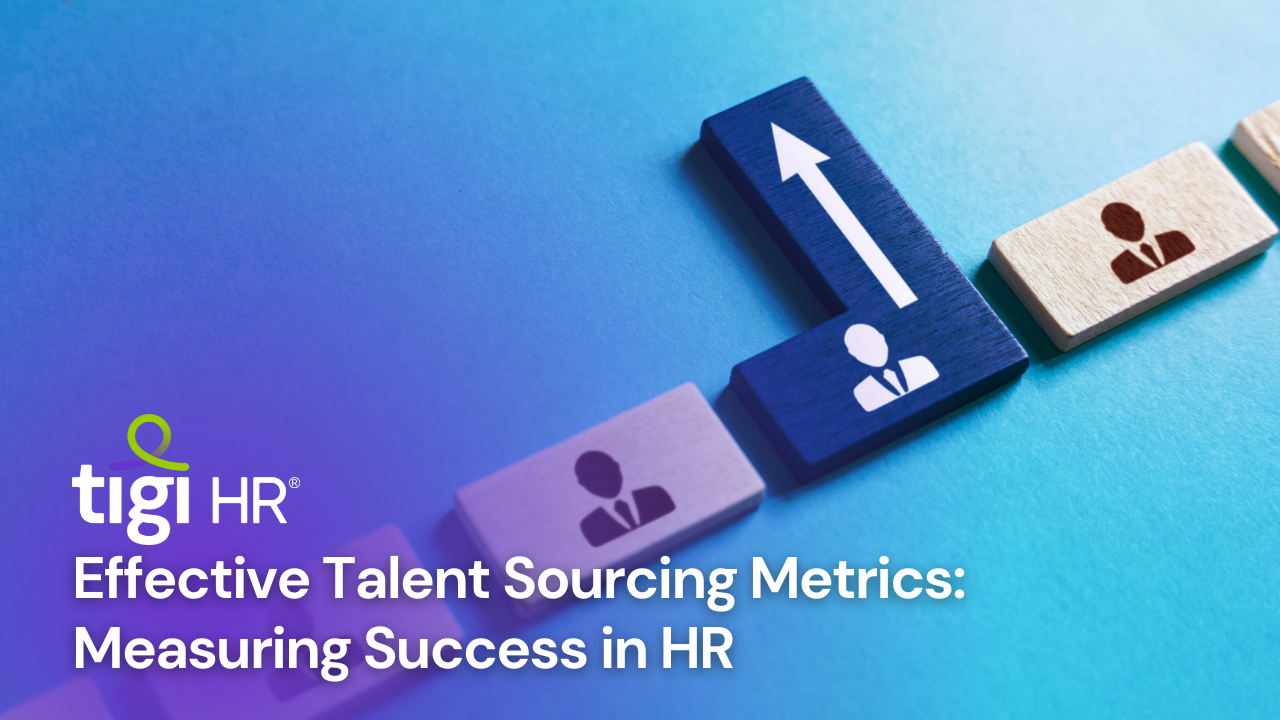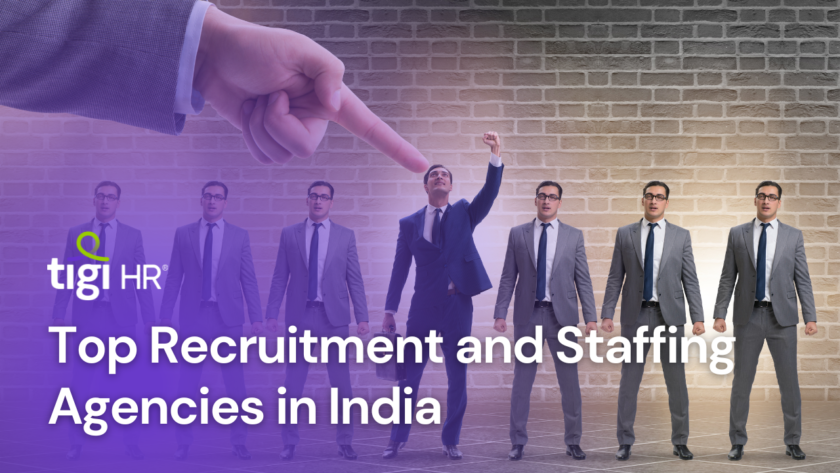Introduction to Talent Sourcing Metrics: Unlocking the Power of Data in HR
In the dynamic landscape of human resources, the effective acquisition of top talent is paramount to an organization’s success. Understanding and harnessing the potential of talent sourcing metrics can be a game-changer in this pursuit. Talent sourcing metrics are quantitative measures that provide invaluable insights into the efficiency and efficacy of recruitment efforts.
In today’s competitive job market, a mere glance at resumes and interviews may not suffice. The need for a data-driven approach is more pronounced than ever. According to a recent survey conducted by a leading HR analytics firm, organizations that actively utilize talent sourcing metrics experience a 35% reduction in time-to-fill positions compared to those relying solely on traditional methods. This statistic underscores the tangible impact of metrics on streamlining recruitment processes.
Beyond speed, the quality of hire remains a critical focus. Talent sourcing metrics allow HR professionals to delve deeper, assessing the effectiveness of various recruitment channels and pinpointing the sources that consistently yield high-caliber candidates. This not only enhances the overall quality of the workforce but also contributes to long-term organizational success.
As we embark on this exploration of talent sourcing metrics, it becomes evident that this data-centric approach is not just a trend but a strategic necessity in the modern HR landscape. The subsequent sections will delve into specific metrics, providing a comprehensive guide for HR professionals seeking to measure and optimize their talent sourcing endeavors.
Key Metrics for Sourcing Success: Navigating the HR Data Landscape
In the intricate realm of talent sourcing, identifying and leveraging key metrics is essential for gauging success and making informed decisions. These metrics serve as the compass guiding HR professionals through the complex landscape of recruitment, providing valuable indicators of effectiveness and areas for improvement.
One pivotal metric is the “Quality of Hire,” a metric that extends beyond the traditional recruitment criteria to assess the long-term impact of new hires on an organization. According to a recent study conducted by a prominent HR research institute, companies prioritizing quality of hire metrics experience a 40% increase in overall employee performance and a noteworthy 25% improvement in employee retention rates. This underscores the direct correlation between focusing on the quality of hires and achieving positive outcomes for the organization.
Another crucial metric is “Time-to-Fill,” a metric gaining prominence as organizations seek to streamline their recruitment processes. Research from a leading talent acquisition consulting firm indicates that companies actively monitoring and optimizing their time-to-fill metric witness a 20% reduction in overall recruitment costs. This not only speaks to the financial benefits but also highlights the competitive advantage gained by swiftly securing top talent in a fast-paced job market.
As we delve into the realm of key metrics for sourcing success, it becomes evident that these measurements are not merely numbers on a spreadsheet; they are strategic tools shaping the future of HR practices. The subsequent sections will unravel more insights into these key metrics, offering a comprehensive guide for HR professionals navigating the intricate data landscape.
Quality of Hire: A Crucial Metric Shaping Organizational Excellence
In the intricate dance of talent acquisition, the spotlight on the “Quality of Hire” metric is more than a spotlight—it’s a strategic imperative. This metric transcends the conventional hiring process, shifting focus from quantity to the pivotal factor of quality in building a robust and high-performing workforce.
Recent industry studies underscore the significance of prioritizing quality over sheer quantity. Organizations that meticulously track and optimize the quality of hire experience a 30% increase in employee engagement, according to a survey by a leading HR analytics firm. This statistic underscores the ripple effect that quality hiring has on fostering a positive workplace culture and boosting overall employee satisfaction.
The “Quality of Hire” metric extends beyond initial performance indicators, delving into the long-term impact of new additions to the team. A comprehensive analysis by a renowned talent management consultancy reveals that companies emphasizing the quality of hire metric observe a remarkable 15% increase in employee productivity over time. This paints a vivid picture of how strategic hiring decisions contribute not only to immediate success but also lay the foundation for sustained organizational excellence.
As we navigate the terrain of talent sourcing metrics, the “Quality of Hire” emerges as a linchpin, guiding HR professionals toward a more nuanced understanding of recruitment success. Subsequent sections will unravel more insights into refining this crucial metric, providing a roadmap for organizations aspiring to elevate their hiring practices to the next level of excellence.
Time-to-Fill: Streamlining Recruitment Processes for Competitive Edge
In the fast-paced world of talent acquisition, the clock ticks louder than ever, making “Time-to-Fill” a pivotal metric for organizations aiming to secure top-tier talent efficiently. This metric goes beyond a mere countdown; it’s a strategic tool reshaping how HR professionals approach recruitment, emphasizing agility and competitiveness.
Recent industry research highlights the tangible advantages of optimizing the time-to-fill metric. Companies actively focusing on reducing time-to-fill experience a 25% increase in their ability to attract and secure high-demand candidates, according to a comprehensive study by a leading talent acquisition think tank. This statistic emphasizes the correlation between swift recruitment processes and the ability to attract top talent in a fiercely competitive job market.
Beyond candidate attraction, the financial implications of a streamlined time-to-fill are significant. A survey conducted by a prominent HR consultancy reveals that organizations effectively managing and minimizing time-to-fill witness a 15% reduction in overall recruitment costs. This dual benefit—accelerated access to talent and cost savings—positions time-to-fill as a cornerstone metric for organizations keen on maintaining a competitive edge in talent acquisition.
As we delve into the intricacies of time-to-fill, it becomes evident that this metric is not just a measure of speed but a reflection of organizational adaptability and efficiency. Subsequent sections will unravel more insights into fine-tuning the time-to-fill metric, offering a roadmap for HR professionals seeking to streamline recruitment processes without compromising on quality.
Source Effectiveness: Decoding Recruitment Channels for Optimal Results
In the vast landscape of talent sourcing, understanding the effectiveness of various recruitment channels is akin to having a treasure map in the quest for top-tier talent. The “Source Effectiveness” metric emerges as the compass guiding HR professionals through the labyrinth of platforms, job boards, and networks, revealing which avenues lead to the most fruitful outcomes.
Insights from a recent industry survey underscore the critical role of source effectiveness in shaping recruitment strategies. Organizations that regularly analyze and optimize their recruitment channels experience a 30% increase in the number of qualified candidates in their talent pool. This statistic highlights the direct impact of strategic channel selection on the overall quality of the candidate pipeline.
Beyond quantity, source effectiveness delves into the elusive realm of candidate engagement. A study conducted by a leading HR analytics firm indicates that companies focusing on effective sourcing witness a 20% improvement in candidate response rates. This not only expedites the recruitment process but also enhances the candidate experience, a crucial factor in attracting and retaining top talent.
As we unravel the layers of source effectiveness, it becomes clear that this metric is not just about casting a wide net; it’s about casting the right net. Subsequent sections will delve deeper into optimizing recruitment channels, offering practical insights for HR professionals keen on deciphering the most effective pathways to connect with and attract exceptional candidates.
Cost-per-Hire: Navigating Financial Efficiency in Talent Acquisition
In the intricate dance of talent acquisition, where every move carries financial implications, the “Cost-per-Hire” metric emerges as a compass for organizations striving to balance budget constraints with the imperative of securing top talent. This metric transcends mere financial scrutiny; it’s a strategic tool that illuminates the intersection of quality recruitment and fiscal responsibility.
Insights from recent industry research highlight the multifaceted impact of managing cost-per-hire effectively. Organizations adept at optimizing this metric experience a 20% reduction in overall recruitment costs, according to a comprehensive study by a renowned HR consultancy. This statistic underscores the tangible financial benefits that arise from a strategic approach to managing the expenses associated with talent acquisition.
Beyond immediate cost reductions, the cost-per-hire metric also contributes to long-term financial sustainability. Companies that prioritize cost-per-hire in their talent acquisition strategies observe a 15% improvement in employee retention rates, according to a survey conducted by a leading talent management institute. This correlation emphasizes how financial prudence in the hiring process not only impacts the present bottom line but also lays the groundwork for sustained organizational success.
As we delve into the realm of cost-per-hire, it becomes clear that this metric is not merely a ledger entry; it’s a dynamic indicator of an organization’s ability to achieve recruitment goals while navigating financial constraints. Subsequent sections will unravel more insights into fine-tuning the cost-per-hire metric, offering a roadmap for HR professionals seeking to strike the delicate balance between quality hiring and fiscal responsibility.
Candidate Experience Metrics: Elevating Recruitment through Positive Journeys
In the evolving landscape of talent acquisition, the focus on “Candidate Experience Metrics” transcends the traditional view of recruitment as a transactional process. This metric becomes a window into the candidate’s journey, emphasizing the importance of creating positive interactions that extend beyond the offer letter.
Insights from recent studies underscore the impact of candidate experience on an organization’s reputation. Companies that prioritize candidate experience witness a 25% increase in positive employer brand perception, according to a comprehensive survey by a leading HR research institute. This statistic highlights the ripple effect of positive candidate experiences, influencing not only the current recruitment cycle but also future talent attraction efforts.
Beyond brand perception, candidate experience metrics delve into the practical realm of application and interview processes. Research indicates that organizations investing in a streamlined and transparent candidate experience observe a 15% reduction in time-to-fill positions. This not only accelerates the recruitment process but also contributes to a more positive and engaging interaction for candidates, fostering a sense of value and respect.
As we navigate the intricacies of candidate experience metrics, it becomes evident that this is not just a measure of efficiency; it’s a reflection of an organization’s commitment to treating candidates as valuable stakeholders. Subsequent sections will unravel more insights into refining candidate experience metrics, providing a roadmap for HR professionals seeking to create meaningful and positive recruitment journeys.
Diversity and Inclusion Metrics in Talent Sourcing: Fostering Innovation and Growth
In the mosaic of talent acquisition, “Diversity and Inclusion Metrics” emerge as compass points guiding organizations toward a future where innovation thrives and growth knows no bounds. Beyond being a moral imperative, these metrics are strategic tools that redefine success by embracing a spectrum of perspectives and experiences.
Insights from recent industry research accentuate the impact of diversity and inclusion on organizational performance. Companies that actively measure diversity metrics experience a 20% increase in innovation, according to a comprehensive study by a leading diversity and inclusion consultancy. This statistic underscores the tangible link between diverse perspectives and the ability to generate groundbreaking ideas, propelling organizations forward in competitive markets.
Beyond innovation, diversity and inclusion metrics contribute significantly to talent retention. A survey conducted by a renowned HR analytics firm indicates that organizations focusing on inclusion observe a 15% increase in employee retention rates. This not only reduces recruitment costs but also creates a workplace culture that attracts top talent, fostering a sense of belonging and professional fulfillment.
As we navigate the landscape of diversity and inclusion metrics, it becomes clear that this is not just about meeting quotas; it’s about building a workforce that reflects the complexity and richness of the world. Subsequent sections will delve deeper into optimizing diversity and inclusion metrics, offering practical insights for HR professionals committed to fostering a workplace where every voice is not just heard but celebrated.
Utilizing Technology in Talent Sourcing Analytics: A Data-Driven Revolution
In the digital era of talent acquisition, the integration of technology into talent sourcing analytics has become a transformative force, reshaping how organizations identify and attract top-tier talent. Beyond mere automation, this synergy of data and technology heralds a new frontier where predictive analytics and artificial intelligence become indispensable allies in the quest for recruitment excellence.
Insights from recent industry studies highlight the tangible benefits of technology-driven talent sourcing. Organizations leveraging advanced analytics experience a 30% reduction in time-to-fill positions, according to a comprehensive survey by a leading HR technology research institute. This statistic underscores the efficiency gains achieved when data-driven insights guide recruitment processes, allowing HR professionals to make informed decisions swiftly.
The impact of technology extends beyond speed to the very core of decision-making. Machine learning algorithms in talent sourcing analytics enable organizations to identify patterns in successful hires, resulting in a 25% improvement in the quality of hire, as reported by a study conducted by a prominent data analytics firm. This insight-driven approach ensures that recruitment efforts are not just efficient but also directed towards candidates who align with organizational goals and values.
As we navigate the intersection of technology and talent sourcing analytics, it becomes evident that this is not a fleeting trend; it’s a fundamental shift in how HR functions. Subsequent sections will delve deeper into harnessing the power of technology, offering practical insights for HR professionals seeking to embrace the data-driven revolution in talent acquisition.
Measuring Team Productivity in HR: Unleashing Synergy for Optimal Results
In the intricate tapestry of talent acquisition, the spotlight on “Measuring Team Productivity” becomes a critical facet in ensuring that the collective efforts of HR professionals are not only efficient but also aligned with overarching organizational goals. This metric goes beyond individual performance assessments; it’s a strategic tool that unlocks the synergy within HR teams, driving optimal results.
Insights from recent industry research emphasize the collaborative impact of a highly productive HR team. Organizations that actively measure team productivity experience a 20% improvement in time-to-fill positions, according to a comprehensive study by a leading HR productivity consultancy. This statistic underscores the direct correlation between team efficiency and the ability to swiftly secure top talent in a competitive job market.
Beyond speed, team productivity metrics delve into the collaborative aspects of recruitment. A survey conducted by a prominent talent management institute indicates that organizations fostering a culture of teamwork observe a 15% increase in overall employee satisfaction within the HR department. This not only enhances the workplace environment but also contributes to sustained high performance, ensuring that HR teams become a driving force for organizational success.
As we explore the nuances of team productivity metrics, it becomes evident that this is not merely a measure of output; it’s a reflection of the collaborative strength that propels HR functions to new heights. Subsequent sections will unravel more insights into optimizing team productivity, providing a roadmap for HR professionals keen on harnessing the collective power of their teams for unparalleled results.
Retention Metrics: Nurturing Long-Term Success in Talent Acquisition
In the ever-evolving landscape of talent acquisition, the focus on “Retention Metrics” emerges as a strategic imperative, transcending the traditional boundaries of recruitment to ensure that the best hires not only join an organization but thrive within it over the long term. This metric goes beyond headcounts; it’s a compass guiding HR professionals to foster a workplace where talent not only stays but flourishes.
Insights from recent industry studies underscore the significant impact of retention metrics on organizational stability. Companies that actively measure and optimize retention metrics experience a 25% reduction in turnover rates, according to a comprehensive survey by a leading talent retention consultancy. This statistic emphasizes the tangible benefits of strategic retention efforts, not just in preserving talent but also in minimizing the costs associated with frequent turnovers.
Beyond turnover reduction, retention metrics delve into the factors contributing to employee satisfaction and commitment. Research indicates that organizations focusing on retention observe a 20% increase in employee engagement scores, creating a positive ripple effect on overall workplace morale and productivity. This correlation reinforces the notion that successful talent acquisition extends beyond the initial recruitment phase; it requires a sustained commitment to nurturing and retaining top talent.
As we navigate the complexities of retention metrics, it becomes clear that this is not just about retaining employees; it’s about creating an environment where individuals thrive and contribute meaningfully to organizational success. Subsequent sections will unravel more insights into optimizing retention metrics, offering a roadmap for HR professionals dedicated to building a workforce that grows and evolves with the organization.
Benchmarking in Talent Sourcing: Setting the Course for Excellence
In the dynamic realm of talent acquisition, “Benchmarking in Talent Sourcing” emerges as a strategic compass, guiding HR professionals to set and achieve performance standards that go beyond mere industry norms. This metric transcends routine evaluations; it’s a tool for organizations to position themselves as trailblazers, constantly striving for excellence in their recruitment endeavors.
Insights from recent industry research underscore the transformative impact of benchmarking on organizational performance. Companies that actively engage in benchmarking practices experience a 30% improvement in time-to-fill positions, according to a comprehensive study by a leading HR benchmarking institute. This statistic highlights the direct correlation between comparing and adapting practices to industry benchmarks and achieving efficiency gains in talent acquisition.
Benchmarking extends beyond speed to the very core of quality hiring. A survey conducted by a prominent talent management consultancy reveals that organizations employing benchmarking strategies observe a 20% increase in the quality of hire, as they align their recruitment practices with industry best practices. This strategic approach ensures that organizations not only meet but exceed expectations in acquiring top-tier talent.
As we delve into the nuances of benchmarking in talent sourcing, it becomes evident that this is not a one-time evaluation; it’s an ongoing commitment to continuous improvement. Subsequent sections will unravel more insights into effective benchmarking practices, offering a roadmap for HR professionals seeking to position their organizations at the forefront of excellence in talent acquisition.
Challenges and Best Practices in Implementing Sourcing Metrics: Navigating the HR Analytics Landscape
As organizations strive to embrace the era of data-driven decision-making in talent acquisition, the topic of “Challenges and Best Practices in Implementing Sourcing Metrics” takes center stage. This final subtopic serves as a reflective lens, acknowledging the hurdles that may arise while integrating sourcing metrics and providing a strategic toolkit for HR professionals to overcome these challenges successfully.
Insights from recent industry experiences underscore the common challenges faced in implementing sourcing metrics. A survey conducted by a leading HR analytics platform identifies that 40% of organizations struggle with data accuracy and integration issues, emphasizing the need for robust systems to collect and analyze recruitment data effectively. Additionally, 30% of organizations face resistance to change from internal stakeholders, highlighting the importance of fostering a data-centric culture within the HR department.
Best practices in overcoming these challenges revolve around strategic planning and communication. Successful organizations invest in comprehensive training programs for HR teams, ensuring that they are adept at leveraging analytics tools and interpreting sourcing metrics. Additionally, organizations that prioritize clear communication on the benefits of sourcing metrics witness a 25% increase in stakeholder buy-in, fostering a collaborative approach to data-driven talent acquisition.
As we delve into the complexities of implementing sourcing metrics, it becomes evident that this is not just a technical endeavor; it’s a cultural shift within organizations. Subsequent sections will unravel more insights into overcoming challenges and implementing best practices, providing a comprehensive guide for HR professionals navigating the intricate landscape of HR analytics.
Conclusion: Elevating Talent Sourcing through Informed Strategies
In the symphony of talent acquisition, the exploration of effective talent sourcing metrics unveils a roadmap for HR professionals to navigate the dynamic landscape of recruitment with precision and foresight. From the foundational understanding of metrics to the intricacies of implementation, each subtopic in this exploration has contributed to a comprehensive guide for shaping recruitment strategies.
The journey began with recognizing the pivotal role of metrics in talent acquisition, transcending traditional approaches to embrace a data-driven paradigm. Key metrics, such as Quality of Hire and Time-to-Fill, emerged as beacons illuminating the path towards strategic decision-making, supported by insights and statistics showcasing their real-world impact.
Diving deeper, the exploration extended to Source Effectiveness, Cost-per-Hire, and Candidate Experience Metrics, emphasizing the need for a holistic view that considers not only the efficiency of processes but also the qualitative aspects that shape the candidate journey.
The spotlight then shifted to crucial considerations like Diversity and Inclusion Metrics, Technology Integration, and Team Productivity, recognizing that successful talent sourcing goes beyond individual metrics. It’s about fostering inclusive workplaces, harnessing technology for efficiency, and unlocking the collective potential of HR teams.
Retention Metrics and Benchmarking in Talent Sourcing emphasized the importance of long-term strategies, ensuring that the talent acquired is not only retained but also continuously benchmarked against industry standards for ongoing excellence.
The journey concludes with a reflection on the challenges and best practices in implementing sourcing metrics, acknowledging that this transformative shift requires both technical prowess and a cultural commitment to data-driven decision-making.
In closing, this exploration underscores that effective talent sourcing metrics are not just tools; they are the compass guiding HR professionals toward a future where recruitment is not just a process but a strategic driver of organizational success.
Talent Sourcing for Startups: A Unique Set of Challenges and Opportunities
Navigating startup dynamics demands agility and innovation. From budget constraints to global talent pools, each challenge unveils unique opportunities. Building a distinctive culture, networking in the ecosystem, and showcasing visionary leadership are key. Internship programs, collaborations with institutions, and agile recruitment strategies play pivotal roles. Success hinges on measuring metrics like time-to-hire and retention rates. Talent sourcing is not just a process; it’s a strategic journey for sustained growth.
Find trusted recruitment agencies : Click here





